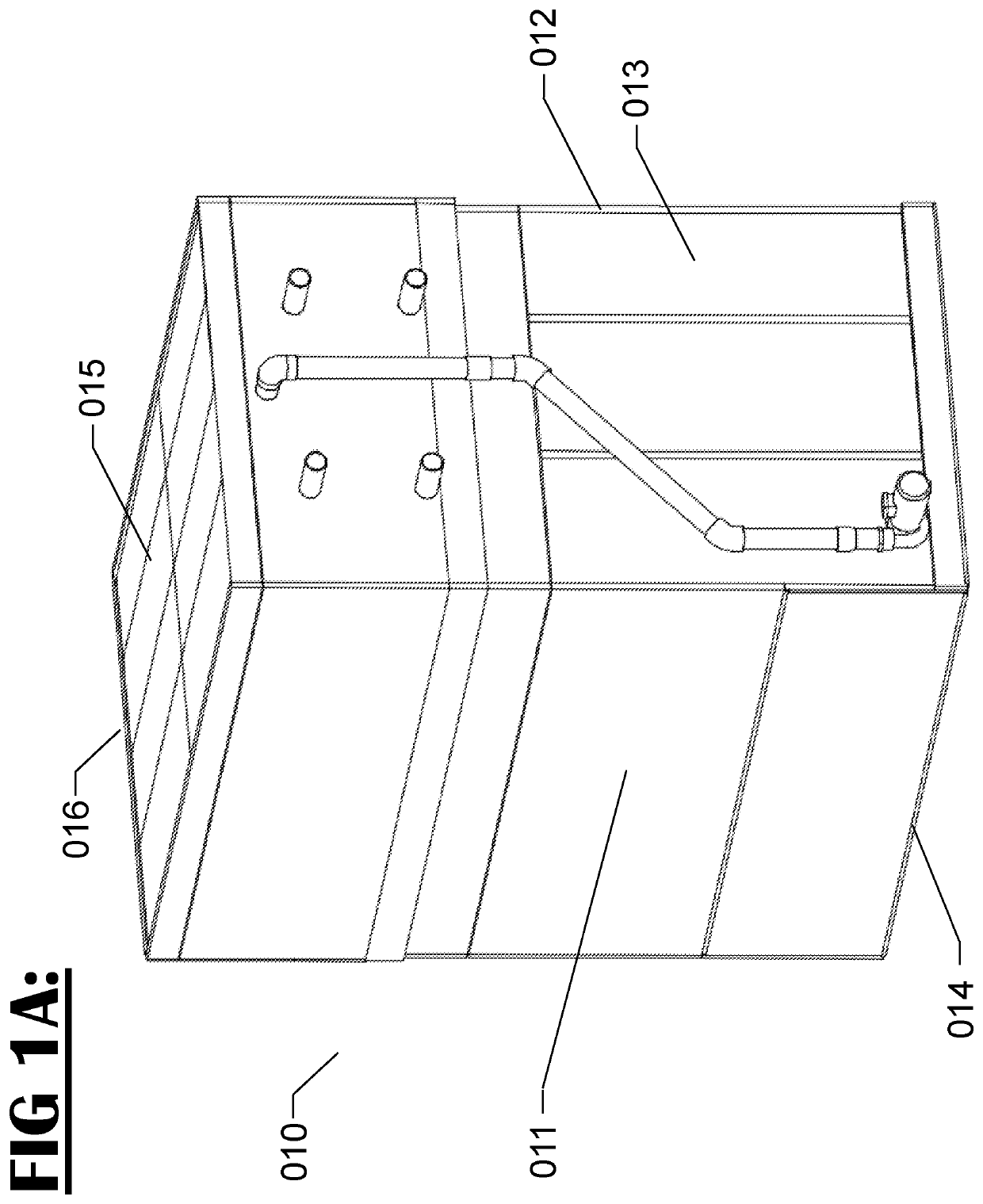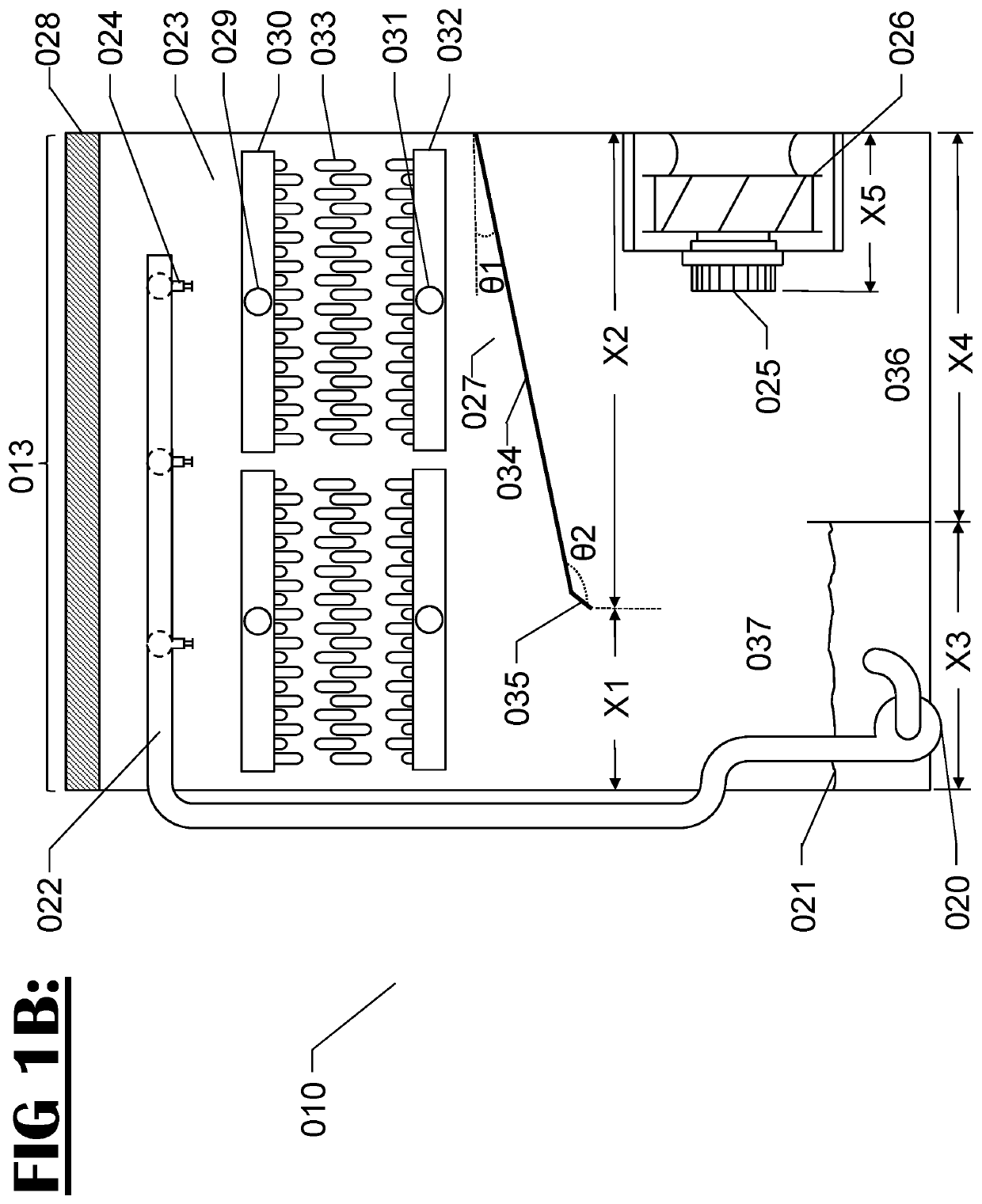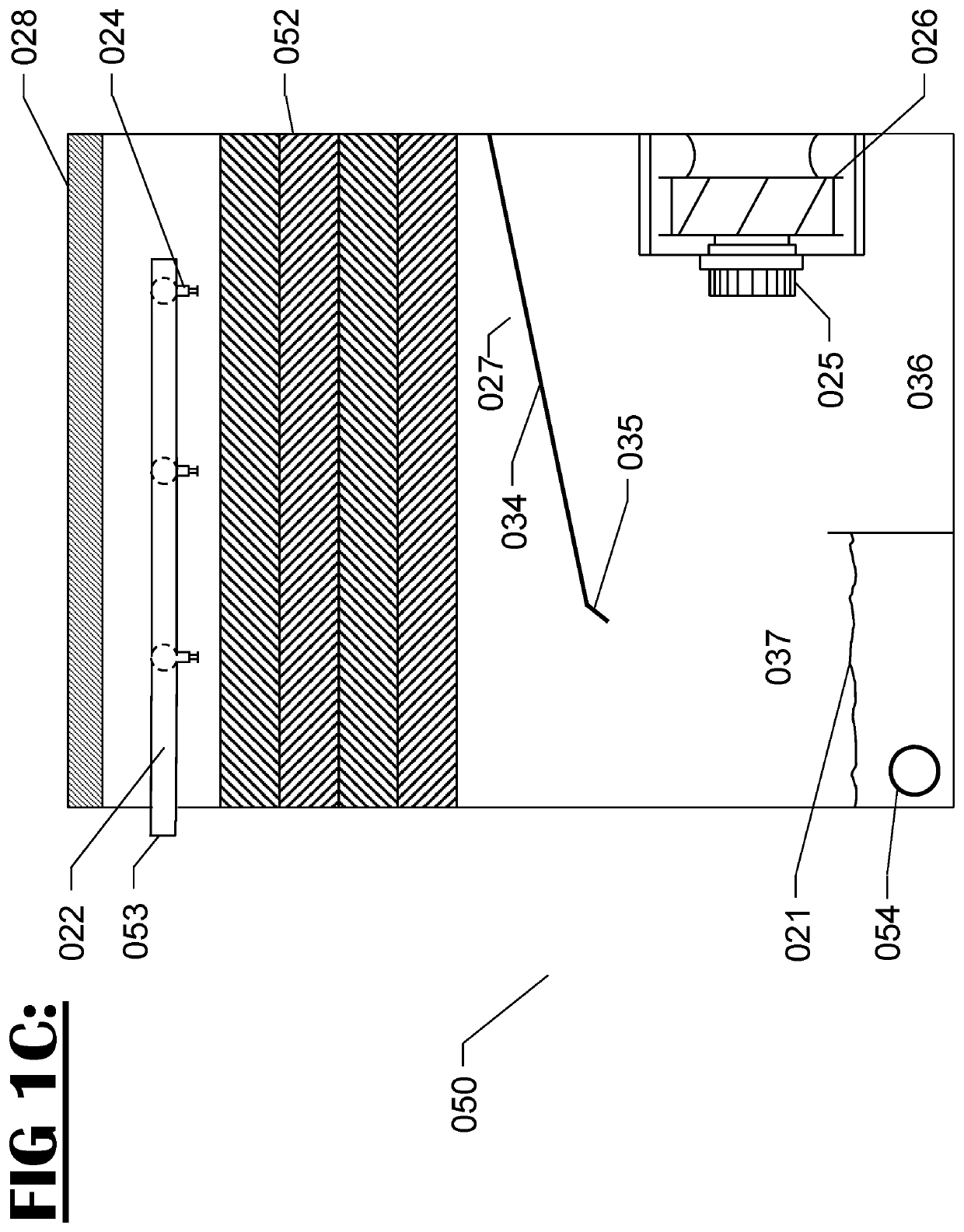Water collection/deflection arrangements
a technology of water collection and deflection, applied in the direction of climate sustainability, stationary conduit assembly, trickle cooler, etc., can solve the problems of increased fan energy consumption for a given airflow, poor fan performance, higher unit cost, etc., to reduce airflow resistance, improve air distribution, and improve air spray
- Summary
- Abstract
- Description
- Claims
- Application Information
AI Technical Summary
Benefits of technology
Problems solved by technology
Method used
Image
Examples
fifth embodiment
[0041]Referring now to FIGS. 4A and 4B, overlapping gutter water collection system 400 is in accordance with the present invention. FIG. 4A shows a perspective view of the overlapping gutter water collection system 400. Overlapping gutter water collection system 400 is shown to be comprised of a plurality of gutter assemblies 410, side panels 411, back panel 412, bottom support channel 413, and top support channel 414. The overlapping gutter water collection system 400 is designed to span the full distance between face 013 and face 016, as defined in FIG. 1, as shown in FIG. 2A, and is supported by the side 411 and back panels 412, along with the bottom support channel 413, which are attached to the unit structure. The gap between the side 411 and back panels 412, along with the bottom support channel 413, and the unit structure is kept water tight by gasket sealing, butyl tape, and / or coating, so that the spray water does not leak through the gap, but the sealing methodology is not...
embodiment 700
[0057]Referring now to FIG. 13A, a twenty-eight embodiment is shown. Similar components use similar numerals as FIG. 1B in FIGS. 13A and 13B. As shown in FIG. 13A, embodiment 700 is an evaporative indirect heat exchanger product which could be a closed circuit cooling tower or an evaporative condenser, with an overlapping sloped panel water management system 701, in accordance with a twenty-eight embodiment of the present invention. Each sloped panel is composed of a generally straight but sloped section 602, a generally downward pointing drip edge 603, and a generally upward pointing deflection plate 604 to prevent overflow and limit splash out. The panels of the water management system 701 are sloped towards the sides of the unit, so as to direct the water towards lateral water collection troughs 703, from which the water cascades to the sump 021. An angled deflection plate 702 forms the top part of the overlapping sloped panel water management system 701. The overlapping sloped p...
PUM
 Login to View More
Login to View More Abstract
Description
Claims
Application Information
 Login to View More
Login to View More - R&D
- Intellectual Property
- Life Sciences
- Materials
- Tech Scout
- Unparalleled Data Quality
- Higher Quality Content
- 60% Fewer Hallucinations
Browse by: Latest US Patents, China's latest patents, Technical Efficacy Thesaurus, Application Domain, Technology Topic, Popular Technical Reports.
© 2025 PatSnap. All rights reserved.Legal|Privacy policy|Modern Slavery Act Transparency Statement|Sitemap|About US| Contact US: help@patsnap.com



